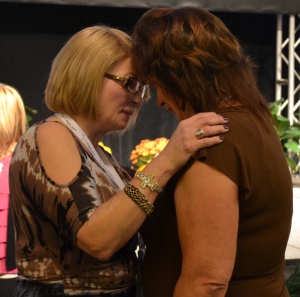Our recent Burn Support Magazine features a survivor profile of Luis Nevarez, firefighter and burn survivor, who suffered an electrical burn injury. Luis shares his story of recovery, support, and his enthusiasm for ‘getting back to living’ – back to full duty as a firefighter, and promoting through the ranks to his current role as Division Chief. Here is that story:
By James Bosch, MA, MFTi
There’s a voice in my head. It’s been there ever since the day I conducted the interview for this story. I’m glad the voice is there, because it’s the voice of Luis Nevarez, and Luis has powerful wisdom and positive messages to share. I’m sure that you too will be inspired as you learn of Luis’ perseverance and courage in the aftermath of a doubly devastating injury—a severe electrical burn that ultimately led to the amputation of his left forearm.
It is difficult to bounce back from injuries of this nature. It is rarely quick or easy, and every survivor has his or her own story and path to recovery, based on individual life circumstances and support networks.
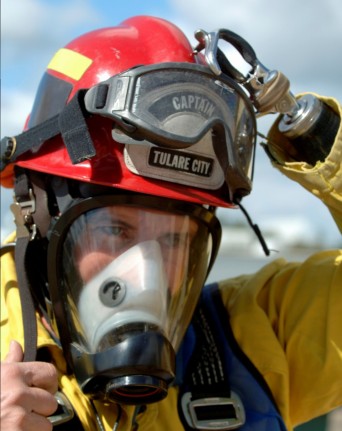 Many firefighters who have survived burns say that they struggle with seeing themselves as having survived a trauma versus simply having experienced an occupational hazard. Luis’ story includes both sides of this issue—although his main focus was getting back to work, he recognized along the way that his burn injury uniquely qualified him to help other individuals recovering from similar traumas.
Many firefighters who have survived burns say that they struggle with seeing themselves as having survived a trauma versus simply having experienced an occupational hazard. Luis’ story includes both sides of this issue—although his main focus was getting back to work, he recognized along the way that his burn injury uniquely qualified him to help other individuals recovering from similar traumas.
In this interview, Luis mentions having a more synergistic life view since the accident. In its most basic definition, this means that by working together we are stronger than the individual. I have had the great fortune of seeing Luis in action as a volunteer with burn survivors. We co-facilitated a support group for young adult male survivors one evening. Luis’ calm presence made the guys in the room feel comfortable. He really let his own life story be an example; I watched his empathy and care in action.
Luis Nevarez is an amazing person for each of us to have on our support team. And if you listen closely, you just might hear his encouraging voice in your head the next time you’re facing a challenge.
James: When you were a kid, did you know you wanted to be a firefighter?
Luis: I can’t say I knew I wanted to be a firefighter. I was always into sports; that was my main focus as a kid. In high school, I had a job bagging groceries at the local supermarket. The fire crews would come in to shop, and I’d ask about their jobs. They finally invited me to the firehouse. Talking with them, I realized that it was a job I was interested in, so I enrolled in the Fire Academy and applied to many counties throughout California. My first job came after a 15-hour Greyhound bus ride from LA to Humboldt County. I shaved and changed in a Denny’s [restaurant] bathroom and was ready for my interview. Needless to say, I was hired and that is where my career as a firefighter began.
James: What most motivated you to accomplish your goal?
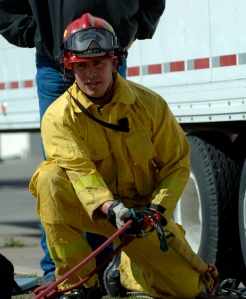 Luis: I have always believed that if you really want something, you have to go grab it. No one will just give it to you. After I was hired for that first job in Crescent City, I tested all over the state to get into a full-time firefighter position. Tulare City was one of the places I tested, and 2 years later they called me for a job. I’ve been there for 25 years, and throughout my career I have stayed consistent with training and education. I have worked very hard to attain my goals in promoting through the ranks.
Luis: I have always believed that if you really want something, you have to go grab it. No one will just give it to you. After I was hired for that first job in Crescent City, I tested all over the state to get into a full-time firefighter position. Tulare City was one of the places I tested, and 2 years later they called me for a job. I’ve been there for 25 years, and throughout my career I have stayed consistent with training and education. I have worked very hard to attain my goals in promoting through the ranks.
When I was injured and lost my hand, doing office work was not an option. I was determined to go back as a firefighter with no limitations or special accommodations. The more people questioned if that was really possible, the harder I worked at it. This field is very competitive and promoting was not easy and on one occasion I did not get the promotion. I did not let this get me down, I realized my strengths were in the field, not in administration, so I went back to school and received a bachelor’s degree to balance out my skills. The second time I went for the promotion, I got it! I always tell people that it’s not how you fall down that matters, it’s how you get back up.
What motivates me? My passion for the fire service and family. I’m a single dad with three kids that I have taught to work hard for their dreams. They are excelling in their lives.
James: Can you talk about your accident and your experience in the hospital?
Luis: My accident happened on January 26, 2002. I accidentally touched a hidden 12,000-volt line while breaking a limb off of a smoldering tree. This caused my burn injuries and eventually the amputation of my left forearm. I was in the hospital for 35 days. I was back to work on light duty by August, and 364 days after my accident I was back on a fire truck with no accommodations or restrictions. I was missing an arm, but my heart was there and my passion was there. It was a long road of hard work to get my job back but again I was determined.
The day I was admitted to the hospital, the HBO (hyperbaric oxygen chamber) nurse asked me if I had trouble being in confined spaces. I laughed and asked if they could give me continuing education hours towards my confined space rescue certification. That was the attitude I brought into it.
There were definitely challenges being in the hospital and in my recovery. The support that I had from the fire service, my family, and friends contributed to the positive outcome of my rehabilitation.
James: What are some of the emotional challenges you have faced?
Luis: Some days were worse than others, and I still have some bad days. What I’ve learned is to just ride out the hard days and remind myself that the feelings won’t last forever. The next day I am usually back to myself again. Accepting the emotions I feel at the moment instead of ignoring them is important in the healing process. It’s a daily challenge, but any step forward is better than none.
My kids had to deal with people staring at me when I didn’t have a prosthetic, especially in public places like taking my son to baseball games or the mall with my daughter. I had so much support, but I don’t think my children received the proper counseling to deal with the accident. I really don’t know how they got through the experience so well.
Luis’ three children are Ashley (24), Luis, Jr. (22), and Alyssah (15).
Ashley: Since the accident, nothing about my dad has changed except that he now has a hook. He has taught me to be a very hardworking person and to not give up no matter what. That’s his motto: Never give up. I would like employers and loved ones of survivors reading this to also know that they should never give up on people with a disability. Just look at my dad!
Luis, Jr.: To watch him overcome his accident showed us that we can find a way to do anything. He has taught us to stay positive and surround ourselves with people who want us to succeed. My dad is great because he doesn’t let “how” be a factor. Just envision yourself there and you will find a way; have fun and enjoy every day.
Alyssah: The accident brought us closer as a family. We laugh together and make jokes. I think what is great about my dad is that he is a living example of how you can see the positive side of things. My dad is the person you can go to for anything. He looks at life as a challenge to win. I wouldn’t change it now. My dad is amazing as he is.
Luis: At first I had some body image issues. It was challenging for me because people would stare at me and I found myself repeating my story over and over again and repeating my trauma making it difficult to move forward. Aside from the amputation, I was dealing with third-degree burns all over my body that were hidden to the outside world. I am a patchwork of scars and donor sites. I recently ran across a Polaroid picture of the burns to my bottom when I was in hospital and it looks like a red heart. Humor is important in dealing with my burns.
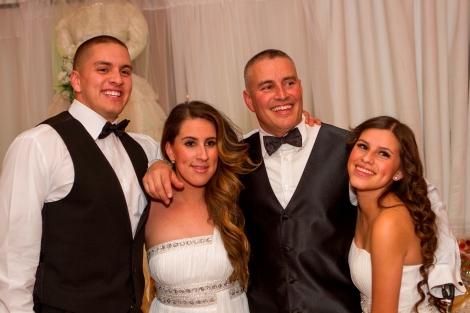
Sandra Yovino is the nurse manager at Leon S Peters Burn Center at Community Regional Medical Center in Fresno, California.
Sandra: Luis’ personality lights up a room, he attracts people to him with his mannerisms and his charisma. I’ve gotten to watch his process over the 10 years since his injury. You know, there’s a false belief among many that the healing takes place in the inpatient phase or the outpatient phase. The truth is, the real work starts when patients are discharged from the hospital, when they start dealing with things like pain management, chronic pain, adjusting to a new lifestyle or career, or adapting to their previous work. With all my work with burn survivors over the years, I have also noticed that the milestone marked by each decade or life event can trigger important new issues for survivors to deal with. For instance, I have watched Luis successfully navigate endings of relationships, disappointments at work, and children transitioning to teenagers. These events bring up new challenges in anyone’s life. I’ve watched Luis transition through all these phases.
James: Luis, tell me about your amazing journey from this major burn injury and amputation to full-duty firefighter with no accommodations.
Luis: When I first went back I was on light duty, mostly doing fire prevention work. I was determined to pass the manipulative and physical tests required as a firefighter, and return to full duty. There was a new fire academy starting, so I joined the new recruits and went through all the trainings with them. These were classes that I used to teach! I became a student again to relearn my skills. I was determined not to return to work if I was going to get hurt or if I was going to hurt others.
I also went to the gym everyday. I worked with my prosthetist and my occupational therapist to find the best type of hook for my arm. I learned new ways to do old tasks, like screwing on a fire hose coupling or operating the Jaws of Life. It was actually fun for me to figure out new ways to do things. There were days I would get frustrated, but our job is about challenges and pushing ourselves to find solutions. My coworkers would get involved and make suggestions, too. They were amazing. They would joke about me having a rope burn on my hook after a training exercise, and they would put a Band-aid on the hook and keep going.
I passed everything. The media was there that day filming. A year later I was promoted to engineer, and when we opened a new fire station, I was promoted to captain. I was a fire captain for 10 years with no restrictions or limitations on an engine company. I also teach at several local fire academies, and whether it was confined-space rescue or sliding down a fire hose from a second-story window, I always demonstrate first for my students. Now, I’m proud to be on this new venture as Division Chief, with the new challenge of handling the administrative side of the fire service.
James: Describe what your life is like today.
Luis: My life today…I am a very blessed individual. The three things I am most grateful for are to be able to continue to do the job I love, to be an example for my kids, and to help others. I not only had the motivation to come back to work but to continue accomplishing all the short- and long-term goals I had set for myself long ago. I am blessed to have survived this trauma so that I could have the privilege to raise my children and watch them grow and succeed in all their endeavors.
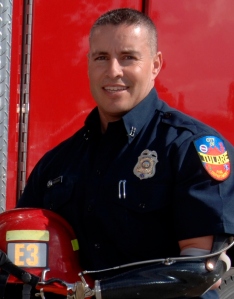 I would describe my view on life now as more synergistic. I’m not as task oriented or “one-minded,” so I’m more able to see how others around me are experiencing their lives. I think I understand better what people need, and not just those that have been through traumatic events, but everyone I am connected to. This means becoming interested in what others are going through and talking more deeply with them. I take the time to share my knowledge and experience. If I notice someone is off or having a bad day at work, I
I would describe my view on life now as more synergistic. I’m not as task oriented or “one-minded,” so I’m more able to see how others around me are experiencing their lives. I think I understand better what people need, and not just those that have been through traumatic events, but everyone I am connected to. This means becoming interested in what others are going through and talking more deeply with them. I take the time to share my knowledge and experience. If I notice someone is off or having a bad day at work, I
take the time to find out what is bothering them.
I saw a man at the gym about 6 months ago, an older man in a wheelchair who perhaps had had a stroke. I noticed him over the months, and then one day he came in with a cane. I took the time to go up to him and tell him how good he was looking. He told me that watching me work out at the gym had been motivating for his rehabilitation. We had a great talk, an amazing connection.
Sandra: Luis has become an important member of our burn team. He is always available to us. He really does give of himself freely. Luis stayed involved with the burn center at first because of his continual needs with his amputation. An important point is that Luis is a person who will seek out help. It is sad that a lot of survivors never deal with their burn injury. Luis did. He started dealing with some of the more core emotional issues about 5 years after the injury. He then became a Phoenix SOAR trainer at the hospital and got connected to Phoenix World Burn Congress. Phoenix WBC really helped him look at the emotional side. He took his younger daughter with him last year, and I think this was an important step for the family’s healing.
Recently, during a visit as a Phoenix SOAR peer supporter, Luis came in to support another burn survivor who was about to have his arm amputated. He shared his story so this patient might be able to imagine life after his amputation by meeting Luis. Luis was able to talk to this guy about acceptance of his amputation. As clinicians, we just can’t do this. It is vital to have survivors as trained peer supporters on the burn team.
James: Luis, do you have any advice for other firefighters injured on the job, burn survivors, or individuals who have lost a limb?
Luis: Continue to work hard with the passion that you have. Set your own limitations; don’t let any other individual set your limits for you. Stay true to yourself, and only do something if you have a passion for it. When you fall down, get back up. Train hard and work hard. Remember that the sky is not the limit—you are.
James: What is the biggest “gift” of this experience?
Luis: Having the ability to reach out to others. I believe my experience is a part of God’s plan for me to help. I am constantly being called on to inspire others in similar circumstances; it is a pleasure never a burden. I walk away feeling good after I have talked to another amputee or burn survivor, or to a classroom of new recruits. Giving hope to others through my life experience and inspiring others through my story is what it’s all about.
I visited the burn center last month to meet a burn survivor who had lost his hand. He was worried he couldn’t do push-ups ever again. I said, “Push-ups, those are easy.” I took off my shirt and showed him how to do push-ups with a prosthetic and without it by utilizing
pillows. His face lit up. I felt so good afterwards because he felt good and I gave him hope.
Another experience that comes to mind happened about 3 months ago. A burn survivor was brought by the fire station. He also had an arm amputation. I demonstrated how to do simple tasks that we take for granted with and without a prosthetic. He wrote me that when he went home he tied his shoes. These are big victories. I let survivors know they can do whatever they want to do. When I see that my experience has had a positive impact and gives hope to at least 1 person, that makes it all worth it—that is the gift that I’m rewarded with.

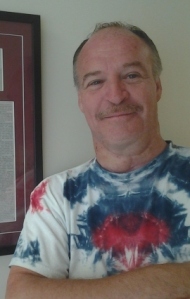 Dexter Durlin pursued his dream of a college education only after his children completed their own degree. He applied to Mitchell Community College to add an Associate’s degree in business to his auctioneer’s license; however, students and faculty encouraged him to consider a teaching career.
Dexter Durlin pursued his dream of a college education only after his children completed their own degree. He applied to Mitchell Community College to add an Associate’s degree in business to his auctioneer’s license; however, students and faculty encouraged him to consider a teaching career.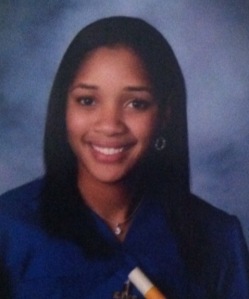 Becoming a neonatal nurse has been a lifelong dream for Chelsea. She has always felt she was meant to work with children. An educational grant from the Phoenix Society for Burn Survivors, provided by a donation from AlloSource, will help her work towards her career goal.
Becoming a neonatal nurse has been a lifelong dream for Chelsea. She has always felt she was meant to work with children. An educational grant from the Phoenix Society for Burn Survivors, provided by a donation from AlloSource, will help her work towards her career goal.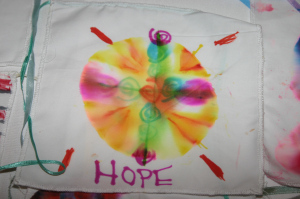
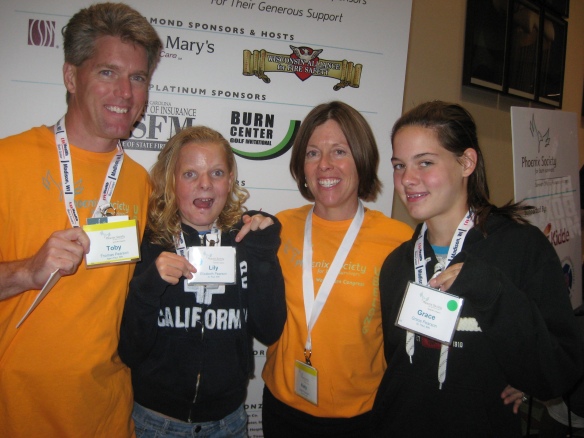
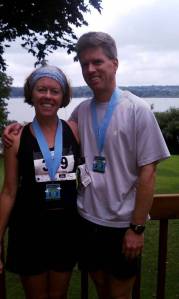
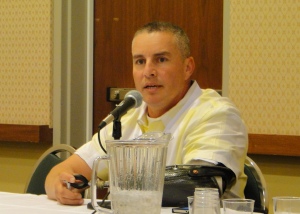
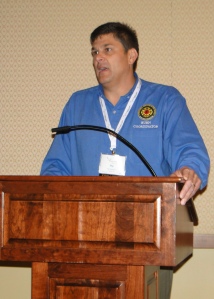
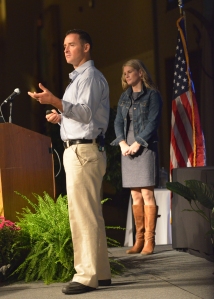
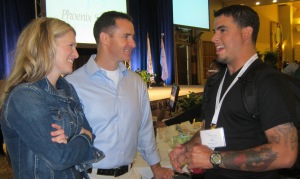
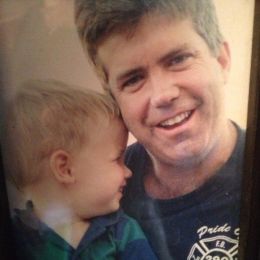
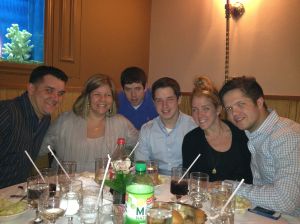
 When you call the Phoenix Society, you may notice something unique in this fast-paced world of automation–you receive a warm and personal “hello” from a member of the Phoenix Society staff. And something truly special happens when a burn survivor, family member, health care professional, or fire service member calls in need of support.
When you call the Phoenix Society, you may notice something unique in this fast-paced world of automation–you receive a warm and personal “hello” from a member of the Phoenix Society staff. And something truly special happens when a burn survivor, family member, health care professional, or fire service member calls in need of support.